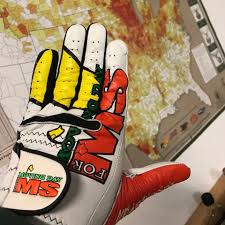By George Waters, USGA Green Section
The following content was first published in the monthly digital edition of Golf Journal. To receive access to the USGA’s Members-only Golf Journal quarterly print and monthly digital publication – along with the many other benefits of USGA Membership – visit support.usga.org.
Green speed is one of the most sensitive and misunderstood topics in golf. Golfers see lightning-fast greens on television or hear claims about green speeds at a course they admire and think that’s an ideal that other courses should aspire to. What they may not realize is that those conditions require significant resources to deliver, may last for only a short period of time, and are not appropriate for the vast majority of golf courses or golfers. There is also a lot of misinformation about green speeds, so golfers shouldn’t believe everything they hear from their playing partners or television broadcasters. Here are five things every golfer should know about green speed:
Faster does not mean better
The appropriate green speed for a particular course depends on the putting green contours, grass type, maintenance budget and skill level of the golfers playing – along with numerous other considerations. Trying to make greens faster than they should be leads to higher maintenance costs, turf damage, lost hole locations, and rounds of golf that are slower and less enjoyable. Sacrificing other aspects of putting green quality in the pursuit of speed just doesn’t make sense. 
Green speeds fluctuate
Putting greens are comprised of living plants that change and perform differently from season to season and even day to day. Temperature, humidity, rainfall and routine maintenance practices all influence daily green speed. Maintaining the same green speed throughout the year is impossible and letting a target number dictate management practices is a recipe for damaged greens and undesirable playing conditions.
Green speeds don’t travel
One of the most important things to know about green speed measurements is that they should not be used to compare one golf course with another. A green speed that is perfect for one course could be way too fast for a course down the road that has steeper green contours or golfers with different skill levels. There are simply too many variables involved to make reasonable comparisons.
Speed costs money
While golfers hear a lot of discussion about courses with fast greens, they don’t hear as much about all that goes into providing those conditions. Lower mowing heights, regular topdressing, verticutting and hand watering are just some of the practices involved in maintaining faster greens. In addition, courses that maintain faster greens typically invest heavily in improving putting green growing environments by removing trees and enhancing drainage. The investments required on a daily and yearly basis to deliver faster green speeds are substantial, and beyond the budget of most golf courses.
Speed can kill
Periods of high heat, humidity and other environmental stresses can push putting green health close to the edge. Trying to maintain a particular green speed during difficult weather carries a serious risk of causing lasting damage that could negatively impact smoothness and speed for weeks to come. To protect putting green turf, golf course superintendents may raise mowing heights or reduce the frequency of mowing and rolling during stressful weather. These adjustments mean temporarily slower green speeds, but they will help preserve good playing conditions for the weeks and months ahead.
It’s easy to understand how golfers can place too much emphasis on green speed. Numbers invite comparisons and faster can easily be mistaken for better. However, if we can keep the big picture in mind and remember that speed is just one of many factors in putting green quality, we’ll save ourselves and superintendents a lot of headaches.










